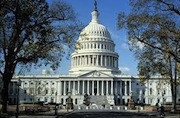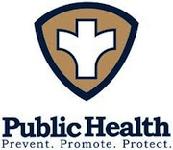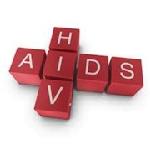Last year Secretary Hillary Clinton called for the U.S. to demonstrate leadership and bring about “an AIDS free generation.” On World AIDS Day 2011, President Obama announced a deepened U.S. commitment to fighting the pandemic, declaring “make no mistake, we are going to win this fight.” Now it’s time to incorporate Treatment as Prevention (TasP) into these efforts. We need bold leadership. We may not have all the answers, but we have enough science to start planning to end the HIV/AIDS epidemic in America.
I’m in Vancouver at the International HIV Treatment as Prevention Workshop where there’s no question about whether treatment prevents HIV transmission. Now the question is HOW to scale up to treat thousands of people living with HIV/AIDS (PLWHA). Antiretroviral treatment cannot do it alone, it works best when used in combination with other proven methods that reduce the transmission of HIV. I’m calling on all sectors of the HIV/AIDS response to provide leadership and translate the promise of TasP into real world options. Specifically, we need action from:
o The Federal Government
o Health Departments (City, County & State)
o Community Based Organizations
o Healthcare Providers
o People Living with HIV/AIDS (PLWHA)
Federal Government
The President and Secretary Clinton gave us the vision, now it’s time for various federal departments to provide the substance to realize that vision and for Congress to appropriate the necessary resources to make it a reality. The following are some initial items that have been recommended by NMAC’s constituents via our Regional Dialogues:
1. Amend The National HIV/AIDS Strategy (NHAS)
2. Numeric Goals For PLWHA on Treatment and Undetectable
3. Ensure Affordable Care Act (ACA) Services Work for PLWHA
4. Protect the Ryan White Care Act and Resources to Fill Gaps
5. Demonstration Projects
6. Invest Resources in Ending the HIV/AIDS Epidemic
7. Conduct Modeling to Determine Best Course of Action
8. Cure & Vaccine
The results of the HIV Prevention Trials Network study 052 (TasP) were released after the National HIV/AIDS Strategywas developed. While the NHAS includes targets to increase viral suppression among Blacks and Latinos by 20%, these are not sufficient to see the benefits of TasP and reduce HIV incidence below one percent of the population. It’s time to amend the Strategy to include goals to implement TasP in America.
The Centers for Disease Control and Prevention (CDC) estimates that there are just over 328,000 American who are HIV positive and have an undetectable viral load. According to remarks made at last year’s USCA by Dr. Julio Montanerat least half of PLWHA will need to achieve viral suppression to produce significant decreases in HIV incidence. As such, the NHAS should be amended to include yearly numeric goals to ultimately increase the number of HIV positive Americans with an undetectable viral load to 600,000 and eventually all PLWHA who are ready to accept treatment.
More than simply setting these goals, it’s critical to ensure that the health care system can manage keeping hundreds of thousands of new PLWHA on optimal treatment. Our health care delivery systems are already at their breaking point. How will state health exchanges and the essential health benefits packages set up under the Patient Protection and Affordable Care Act (ACA) provide HIV/AIDS services for these additional PLWHA? Without adequate healthcare infrastructure, TasP is destined to fail.
How the ACA is implemented will also directly impact the future of the Ryan White Care Act (RWCA). A new RWCA should be used to support wrap around services not covered by the ACA. We have a lot to learn about the ACA before we can honestly discuss the future of the Ryan White Program.
To best determine effective use of limited resources, we recommend Demonstration Projects to research and evaluate models that lead to system changes and capacity development necessary to implement TasP. Cities and states selected should represent the diversity of communities impacted by HIV/AIDS. Of particular concern to NMAC is TasP’s ability to work within communities of color, women, gay and bisexual men, and the transgender community.
If the Demonstration Projects are successful, we then need economic models that look at both costs to implement as well as the costs of failing to take bold action. There will be significant upfront costs associated with enrolling hundreds of thousands of individuals onto treatment, but there will also be massive reductions in costs over time as a result of decreased HIV infections and improved health outcomes. This modeling needs to be presented to Congress as justification for short term increases in resources that will lead to long-term savings.
Even with the new goals for TasP, we still need a cure and vaccine. TasP may stop the epidemic, but it won’t end AIDS.Only a cure can end HIV/AIDS.
Health Departments (State, County, & City)
Leadership from Health Departments (HDs)/state, city or county is essential as we implement TasP, the ACA, and the new prevention priorities outlined by the CDC. HDs need to make hard decisions with limited and shrinking resources. Everyone is not going to be happy. Agencies that can adapt and change will be more successful.
1. TasP Implementation Plans
2. Support Adaptation Of CBOs
3. Essential Health Benefits Package
4. Wrap Around Services Covered By RWCA
There is no new money, so HDs will need to plan how they will implement TasP both with current and reduced funding. These new initiatives require local leadership. HDs play a coordinating role in bringing together all the necessary parties to develop new strategies. PLWHA need to meaningfully be included in the planning process.
Based on these new plans, HDs need to support CBOs in their efforts to adapt. Treatment education will once again become essential and prevention case management may become an increasingly important way to support PLWHA
The Essential Health Benefits (EHB) packages, established by the Affordable Care Act will be determined at the state level. Does your state plan(s) have the benefits necessary to care for PLWHA? HDs will need to help PLWHA seamlessly transition into the plan/s that can best meet their needs.
Understanding state insurance cooperatives/policies will also be necessary to better plan the wrap around servicesnecessary to support engagement in care and treatment adherence for PLWHA. This is why we will need continued funding through the RWCA. CBOs and PLWHA will look to their HDs for leadership and understanding during these rapidly changing times.
Community Based Organizations
1. Adapt
2. Treatment Education Programs
3. PLWHA on Boards of Directors
4. Work Collaboratively
It’s time to adapt. CBOs may provide fantastic services, but they need to provide services that are both fantastic AND will be funded as we work to end the HIV/AIDS epidemic. HIV prevention is changing. HIV care is changing. High Impact Prevention (HIP) from the CDC means increased focus on diagnosing people who are HIV-positive and don’t know. The ACA will change the way HIV/AIDS services are provided and funded.
It’s a brand new paradigm. CBO’s must change their service models to adapt to the ACA and must shift to provide secondary prevention services to PLWHA. Even the best organizations will face challenges. With this amount of change, collaboration will be a key determinant of who survives and/or who fails.
Healthcare Providers
1. Standard Of Care
2. Sequencing Of Medication
3. CD4
4. Patient To Doctor Ratio
5. Nurses
Do the new treatment guidelines change the standard of care for PLWHA? If you have HIV and your doctor does notrecommend that you start antiretroviral therapy (ART), does that mean you are receiving substandard care?
Given the revised HHS treatment guidelines on when to start ART, do we also need to review the sequencing of medications? Both HIV specialists and primary care doctors treating PLWHA will need to keep themselves up to date on all classes of HIV medications and when it is best to prescribe a specific regimen. The healthcare industry will need to regularly evaluate comparative effectiveness of treatment.
The requirement to monitor CD4 counts is fading with the guidelines recommending PLWHA begin ART regardless of their CD4 counts. Changes in or the ability to maintain a suppressed viral load (VL) will become the primary measurement for health equity among PLWHA. Costs of VL tests are increasing significantly as will the number of clients who will benefit from those tests. Any plan serving PLWHA needs to cover the costs of these tests.
Changes in the treatment guidelines mean hundreds of thousands of PLWHA will need access to medication and related health monitoring services. The ACA will increase the number of PLWHA who will go to community health centers (CHC). Given the doctor patient ratio at many CHCs of 1,500 – 2,000 patients for every doctor, will PLWHA get the attention and care necessary to adhere to ART?
In many states nurses are allowed to prescribe medications. How can we better use nursing professionals to improve the standard of care? These are all difficult questions that need answers quickly. The guidelines have already changed and the ACA starts in 2014.
People Living With HIV/AIDS
1. PLWHA Coalitions
2. Fight Criminalization
3. Sit on Board Of Local CBOs
4. Amend Denver Principles
The central premise of TasP requires PLWHA to accept antiretroviral treatment and achieve and maintain an undetectable viral load. This puts PLWHA in the driver’s seat. Now more than ever, we need to invest in and support their leadership! Can you image what would happen if PLWHA organized like they had in the past? In the early days of the epidemic, People with AIDS (PWA) needed to organize to get the necessary services and treatment to stay alive. Now PLWHA need to organize to lead TasP and end this epidemic.
It’s time for a PLWHA Coalition renaissance. This time, these coalitions need to focus on the rights of people living with the virus to not be exploited in order to achieve the goals of TasP. Stigma and discrimination are still difficult realities facing PLWHA.
As my friend Sean Strub has said “Criminalization of HIV transmission is the driving force around stigma – you can’t talk about stigma without addressing the most extreme manifestation of it in the criminal code.” If society is going to ask PLWHA to go onto treatment and to be undetectable, then they have the right to ask for certain protections.
In addition to these protections, PLWHA should also be an integral part of the leadership in the agencies and HDs that are tasked with implementing TasP. CBOs, HDs and federal agencies need PLWHA to end this epidemic, so make them central members of your boards and staff.
Ultimately, it may be time to amend the Denver Principles. These principles worked for People with AIDS in the beginning of the epidemic, but maybe People Living with HIV/AIDS need a revised vision that includes the realities of TasP and their central role to its success.
We need leadership at all levels if we are to successfully realize the goal of ending the HIV/AIDS epidemic. What are you doing to end the epidemic in America?
Yours in the struggle,
Paul Kawata
Executive Director







